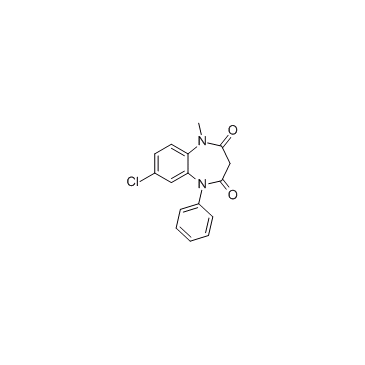CNDAC |
| Catalog No.GC33177 |
CNDAC es un metabolito principal del fÁrmaco oral sapacitabina y un anÁlogo de nucleÓsido.
Products are for research use only. Not for human use. We do not sell to patients.

Cas No.: 135598-68-4
Sample solution is provided at 25 µL, 10mM.
CNDAC is a major metabolite of oral drug sapacitabine, and a nucleoside analog.
CNDAC-induced SSBs can be repaired by the transcription-coupled nucleotide excision repair pathway, whereas lethal DSBs are mainly repaired through homologous recombination. Deficiency in two Rad51 paralogs, Rad51D and XRCC3, greatly sensitize cells to CNDAC. The Rad51D-null cell line is approximately 50-fold more sensitive to CNDAC (IC50=0.006 µM) compared to 51D1.3, the Rad51D-repleted line (IC50=0.32 µM)[1]. CNDAC shows inhibitory activity against HL-60 and THP-1 cells with IC50s of 1.58 µM and 0.84 µM. CNDAC (10 μM) results in a significant drop in cell survival compared to the untreated on days 4, 7, and 14. CNDAC is more effective at reducing viability and inducing apoptosis than ara-C at equivalent concentrations in the THP-1 cell line, which is defined as displaying resistance to ara-C[2]. CNDAC induces DSBs, which are products of replication, rather than a consequence of induction of apoptosis. CNDAC causes DNA damage, and DNA-PK and ATR are dispensable for cell survival. CNDAC exhibits potent activity against human fibroblasts deficient in ATM or transfected with an empty vector, approximately 30-fold more than cells repleted with full-length ATM cDNA, with IC50s of 0.01 μM and 0.3 μM, respectively. CNDAC-induced DNA damage is repaired through the homologous recombination pathway[3].
[1]. Liu XJ, et al. Sapacitabine, the prodrug of CNDAC, is a nucleoside analog with a unique action mechanism of inducing DNA strand breaks. hin J Cancer. 2012 Aug;31(8):373-80. [2]. Jagan S, et al. Bone Marrow and Peripheral Blood AML Cells Are Highly Sensitive to CNDAC, the Active Form of Sapacitabine. Adv Hematol. 2012;2012:727683. [3]. Liu X, et al. Homologous recombination as a resistance mechanism to replication-induced double-strand breaks caused by the antileukemia agent CNDAC. Blood. 2010 Sep 9;116(10):1737-46.
Average Rating: 5 (Based on Reviews and 14 reference(s) in Google Scholar.)
GLPBIO products are for RESEARCH USE ONLY. Please make sure your review or question is research based.
Required fields are marked with *




















